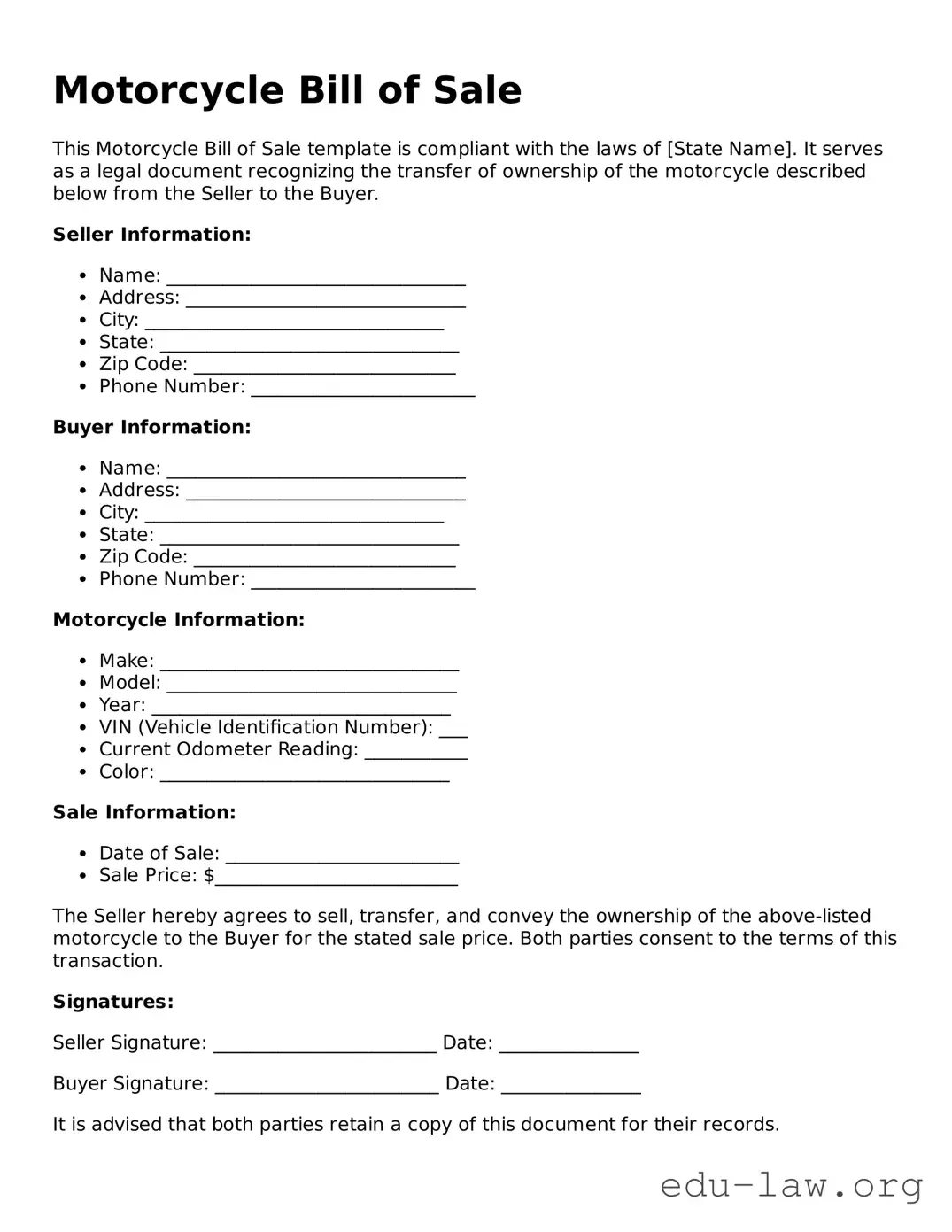Motorcycle Bill of Sale
This Motorcycle Bill of Sale template is compliant with the laws of [State Name]. It serves as a legal document recognizing the transfer of ownership of the motorcycle described below from the Seller to the Buyer.
Seller Information:
- Name: ________________________________
- Address: ______________________________
- City: ________________________________
- State: ________________________________
- Zip Code: ____________________________
- Phone Number: ________________________
Buyer Information:
- Name: ________________________________
- Address: ______________________________
- City: ________________________________
- State: ________________________________
- Zip Code: ____________________________
- Phone Number: ________________________
Motorcycle Information:
- Make: ________________________________
- Model: _______________________________
- Year: ________________________________
- VIN (Vehicle Identification Number): ___
- Current Odometer Reading: ___________
- Color: _______________________________
Sale Information:
- Date of Sale: _________________________
- Sale Price: $__________________________
The Seller hereby agrees to sell, transfer, and convey the ownership of the above-listed motorcycle to the Buyer for the stated sale price. Both parties consent to the terms of this transaction.
Signatures:
Seller Signature: ________________________ Date: _______________
Buyer Signature: ________________________ Date: _______________
It is advised that both parties retain a copy of this document for their records.
